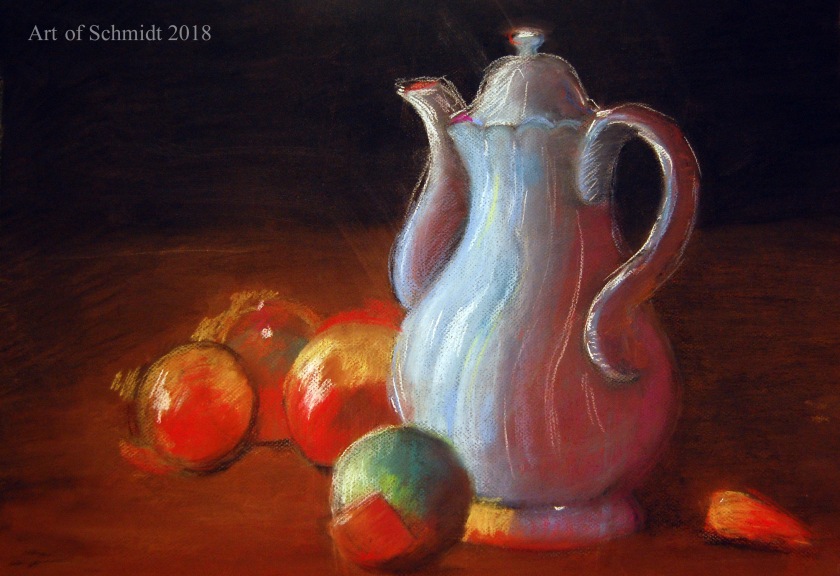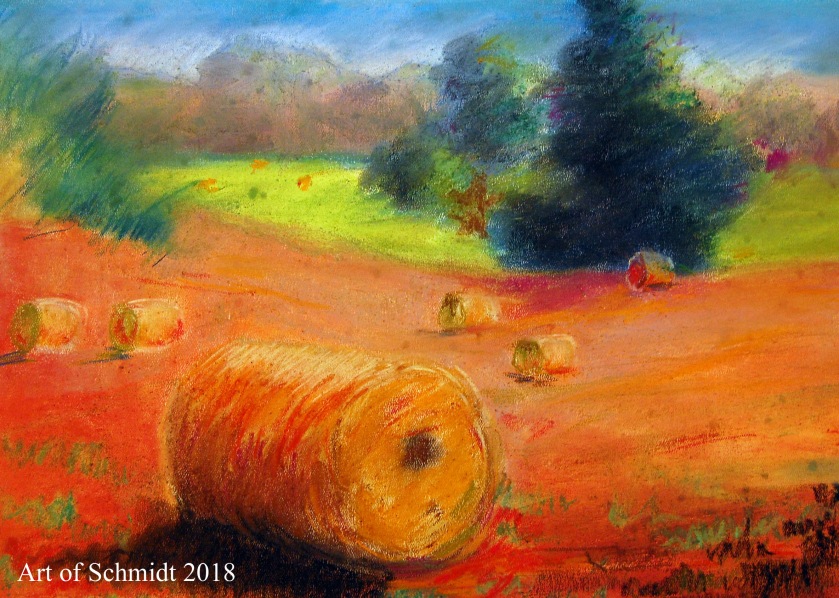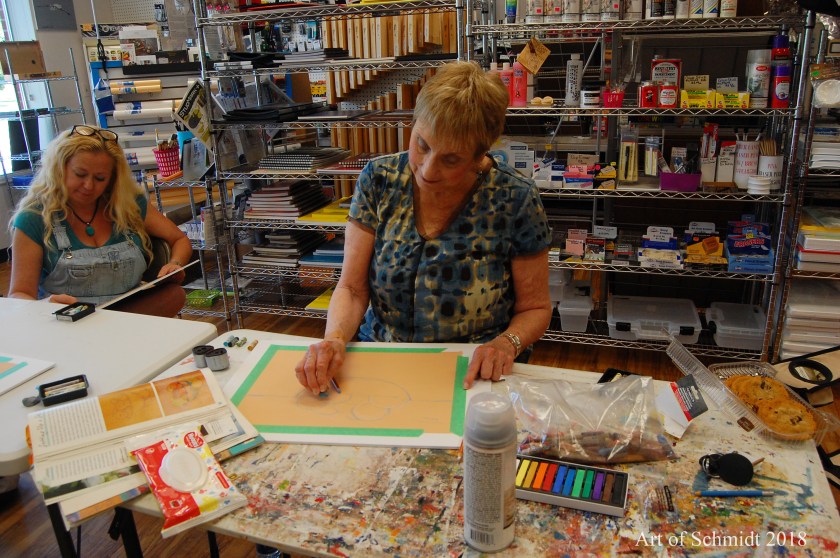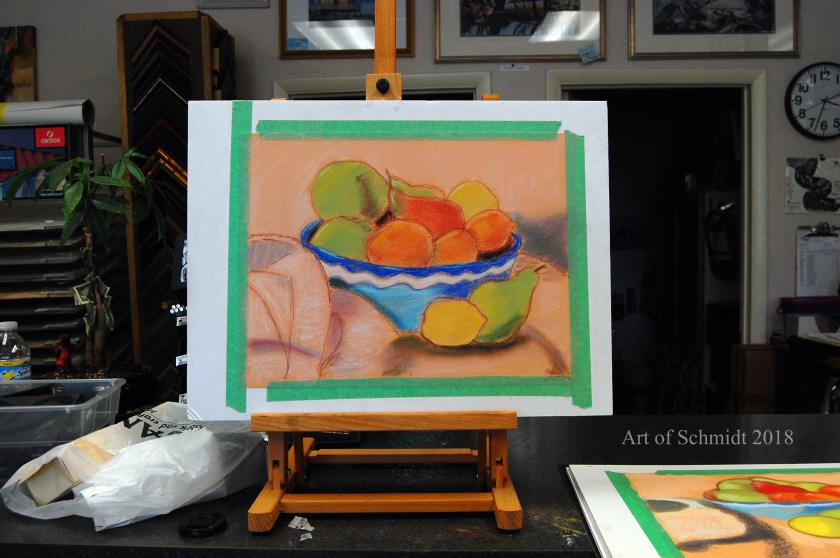Artists: What kind of Artist Are You-Amateur, Hobbyist or Professional?
Why I decided to Write about Artist Types
It’s been awhile since I last posted on this blog, and I have debated off and on within myself, whether to continue blogging about the series I started in May called, and famous failures. However, at the end of the day, I decided that I would switch gears and write about a more arts-based topic. Instead, I decided to examine the topic of different artist types and the pros and cons of each type. It’s my belief that there is no superior type of artist, and that it is all about what type works best for you. However, I do think that it takes a very unique person to be able to combine the roles of both artist and entrepreneur.
In my opinion, such individuals must be extremely dedicated to making art their life’s work, no matter what it takes, or how much time they have to invest in learning their craft and other business skills to make a profit. On the contrary, not every artist has that sort of drive or wants their art to be consumed by the public as a commodity. Perhaps for some, art is an outlet for their feelings and experiences and they would rather keep that private, which is perfectly fine. Meanwhile, there are other artists who find themselves somewhere in the middle between hobbyist and amateur artist. These artists, sometimes called, “double jobbers,” want to take their art to a more professional level, but also work a day job, such as the British artist described in the article, “The Double Jobbers, Making a Living into eh Arts, by Kathy B. Sweeney, posted on The Guardian, https://www.theguardian.com/culture/2012/jul/29/living-working-in-the-arts. Consequently, they are not pressured to make a living from their art. On the other hand, there are artists who cannot imagine doing anything else with their lives and spend almost all of their time marketing and making their artwork. The three types of artists which I will discuss in this blog post are a hobbyist, amateur, and professional artists, along with the pros and cons of each type.
Why is it important to know what type of artist you are?
I picked this topic because I have been wrestling with the question about what category I fall into as an artist: Amateur, Hobbyist or Professional? In my opinion, it’s important to know which category of artist that you fall into because there are specific actions that you need to take if you want to go beyond making artwork for pleasure and start making it with a business mindset. According to author, Alyson Stanfield, who wrote the art business book, I’d Rather Be in the Studio, it is not enough just to make art, you need to learn about how to market and sell your art, as well as to sharpening your artistic skills and creating a specific body of work that showcases your unique style as n artist. (Sources: Artwork Archive, “Alyson Stanfield Shares Her 10 Best Marketing Tips,” https://www.artworkarchive.com/blog/alyson-stanfield-shares-her-10-best-art-marketing-tips, accessed on 06/14/18, and Alyson Stanfield, I’d Rather Be in the Studio!, preface, pg. 1, 2008, Pentas Press, Golden. Colorado, and Aletta de Wal, “Hobbyist, Amateur or Professional Artist: Which Are You?” http://emptyeasel.com/2011/02/01/hobbyist-amateur-or-professional-artist-which-are-you accessed on June 6, 2018. )
My Journey as an Emerging Artist
After my father died in 2011, I realized that I wanted to make the most of the time I had left. I wanted to live without regrets about not pursuing art to the highest extent possible. For as long as I can remember, it has been my dream to be an artist. In fact, my grandmother reported in her scrapbook that I began drawing at the age of 3. When I first started making art with the intention of selling it, back in 2011, my catalyst for making art was that I needed an avenue to express my grief.
Deciding what level of involvement in art I want to have in my life has modified my choices and informed my decisions about my career, how I spend my time, and how I spend my money. I’ve gone from being a wide-eyed dreamer of a someday art career, as an art student, who lived amongst the bubble of the art community, to living life after college with all its startling reality. This world I now live in includes: bills, student loan debt, working as much as I can on my art while balancing a night job, experiencing frequent rejections for art shows, and feeling unrelenting and crushing self-doubt about my abilities as an artist. I feel I have been drifting without many purposes in my quest to be a professional artist, and it’s making me wonder whether this is the life I really want.
Making the Jump from Hobbyist Artist to Amateur Artist
In more recent years, I have really stepped up my activity to bring my art to a more professional level, such as: creating profit and loss sheets in Excel, designing an art catalog of inventory, launching an artist website, blogging about art, participating in more frequent art shows, hosting studio sale events at my home, producing custom art, and starting commerce shops on Etsy and Red Bubble, etc. However, all of this activity has been challenging and sometimes disappointing. It seems to me that no matter how hard I try, I am still struggling to sell my art consistently. I have also made efforts to connect with people on a personal level through writing blog posts, and producing artist newsletters.
However, I am still not making a profit and instead, I find myself falling into debt to pay for framing, art supplies, and marketing expenses. Even more importantly, I feel I have lost the joy of making art in the midst of all this business related activity. Consequently, I’ve had severe doubts about whether I want to be a professional artist, because of the amount of work, time, emotion, skill, and unflagging confidence a professional artist must have to survive. I wonder, are I any other artists are struggling with this situation? And I’m also asking myself, do I really want to be a professional artist, or not? If not, then what type of artist do I want to be?
What are some Specific Types of Artists?
To investigate and to define the different types of artist that anyone can be, I read an article entitled, “Hobbyist, Amateur, or Professional Artist-Which are you?” written by Aletta de Wall on the website, Empty Easel, at http://emptyeasel.com/2011/02/01hobbyist-amateur-or-professional-artist-which-are-you. The author, De Wall, states that there are three categories of artists and they are: Hobbyist, Amateur, and Professional and that each type is distinctly different. (Source: ibid)
The Hobby Artist
For example, hobby artists are not trying to make a living from their art, and they may only make art when the creative bug bites. (Source: ibid) In addition, hobby artists may study for many years and hone their craft by taking classes and workshops, but they may not ever receive the recognition that their work deserves because they are not taking actions which would promote their art effectively, such as having a business or marketing plan. (Source: ibid) On the other hand, an advantage of being a hobby artist is that there is no pressure on them to cater to a specific audience or make a profit, so they are free to experiment with a variety of media and subject matter and styles and techniques. They may also have more time to make art because there is no imperative to make a profit and engage in business-related activities such as marketing, bookkeeping, or sales.
The Amateur Artist
Another category of artist types is the amateur artist. This type of artist has started to play with the idea of making their art into a profession. (Source: ibid) Perhaps they have started to think that they need to start selling their art to help foot the bill for their art supplies, and to start being able to deduct their art expenses from taxes. (Source: ibid) An important distinction between hobby artists and amateurs is that amateurs are willing to give up their personal time in order to learn how to sell their art and creating new works. (Source: ibid) However, they may be uncertain about how to turn their passion into a viable business. (Source: ibid)
The Professional Artist
Finally, the last category of artists that this article discussed is professional artists. This type of artist is distinguished from the other two types of hobby artist and amateur artist because they consider art to be their profession. (Source: ibid, and Drew Kimble, “9 Warning Signs of an Amateur Artist,” https://skinnyartist.com/9-warning-signs-of-an-amateur-artist, accessed on June 7, 2018. )
These types of artists want to make a profit from their art, build a following, and continue to build their business skills at the same time. They have an intense level of dedication to their art and are willing to sacrifice time, money, sleep and do whatever it takes to make a profit. (Source: ibid, and Drew Kimble) They might work another day job to help support their business or eventually quit their day job when they are able so that they can devote more time to making art and learning how to sell it. Other activities that they engage in are: making studio time a daily habit, applying for grants, writing artist newsletters, submitting their artwork for review at galleries and art fairs, write business plans, extend their knowledge of effective business practices by attending art business workshops, etc. (Source: ibid, and Hayley Roberts, “Twelve Things No One Ever Tells You About Being An Artist,” The Huffington Post, https://www.huffingtonpost.com/hayleyroberst/twleve-things-no-one-tell.html. accessed on June 7, 2018.) They also promote their artwork online and offline through social media, their artist website, and in real life artist events, such as art gallery openings, art festivals, etc. (Source: ibid)Some may also make a living by teaching their craft to others. (Source: Aletta De Wal, “Hobbyist, Amateur, or Professional Artist-Which are you?”, and Hayley Roberts, “Twelve Things No One Ever Tells You About Being An Artist,” ) .
These artists may receive more recognition for their artwork, but they may also experience more criticism and rejection than the two other types because they are more aggressively pursuing art gallery representation, etc. In addition, they may have less time for making artwork because they have to balance making art with business-related duties. Furthermore, they may struggle to sell their art or make consistent income and they may face stiff competition from other artists because it is such a saturated field. It is a long road for these artists towards building a following and making a success from their art, but they are dedicated for the long haul. (Source: Drew Kimble, “9 Warning Signs of an Amateur Artist,” https://skinnyartist.com/9-warning-signs-of-an-amateur-artist, accessed on June 7, 2018. )
What about You? What Type of Artist are you?
So what about you, reader? What type of artist are you? I would love to hear about your dreams and hopes with regards to making art. Thanks for taking the time to stop by and read this. Next week, I will be talking about this topic of artist types in more detail, with a slight twist. The twist will be a more in-depth look at what it really means to be a professional artist and why it has been traditionally so difficult to be successful in this field.
The photos below are a collection of art demonstration paintings that I created to help re-teach myself how to draw in pastels and to prepare for the pastel workshop I taught on June 16, 2018, at the Colorful Canvas art supply store. Also included are photos of my art students at work and the pastel drawings they created at the class. Please note, the pastel drawings pictured here are based on the art demonstrations found in the book, The Art of Pastel, published by Walter Foster, in 2010. These pastel drawings are not my original works and are not intended for sale. The works were made simply to practice pastel drawing techniques and help my students to have a demonstration format to follow. In addition, the pastel drawings were originally created by the artists, William Scheider and Marla Baggetta, and no copyright violation is intended.







